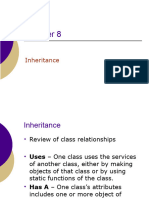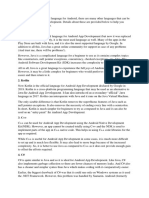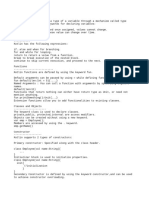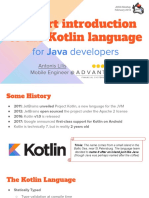0% found this document useful (0 votes)
33 views22 pages04 - OOP Kotlin Inheritance
The document discusses inheritance and data classes in Kotlin, explaining how classes can inherit properties and methods from other classes. It highlights the use of the 'open' keyword to allow overriding of inherited properties and methods, contrasting it with Java's inheritance model. Additionally, it introduces data classes as a way to group properties without many functions, providing examples for clarity.
Uploaded by
namayheng12345Copyright
© © All Rights Reserved
We take content rights seriously. If you suspect this is your content, claim it here.
Available Formats
Download as PDF, TXT or read online on Scribd
0% found this document useful (0 votes)
33 views22 pages04 - OOP Kotlin Inheritance
The document discusses inheritance and data classes in Kotlin, explaining how classes can inherit properties and methods from other classes. It highlights the use of the 'open' keyword to allow overriding of inherited properties and methods, contrasting it with Java's inheritance model. Additionally, it introduces data classes as a way to group properties without many functions, providing examples for clarity.
Uploaded by
namayheng12345Copyright
© © All Rights Reserved
We take content rights seriously. If you suspect this is your content, claim it here.
Available Formats
Download as PDF, TXT or read online on Scribd
/ 22




















































































